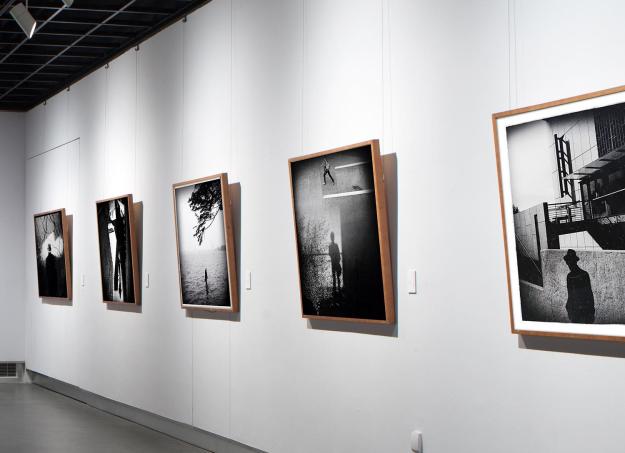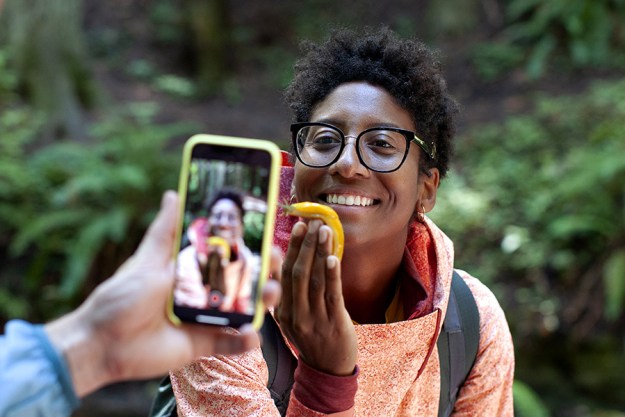
Mobile photography has without a doubt changed the art of the photography, and now, even the industry around the art. Suddenly, everyone with a smartphone is able to capture and create works of (debatable) art that can be immediately published, shared, and even sold. And while your personal feed might be full of cats, food porn, and one too many pictures of your friends’ kid, others are being filled with what the photography world is starting to see as legitimate works of art.
The controversy over whether an Instagram account and an eye for square framing and filters (as well as a penchant for hashtags) makes someone a photographer is a heated. Traditionalists are find themselves and decades of accumulated gear challenged by a pocket-sized powerhouse. But as the market expands to sellable Instagram prints, and even an Instagram-based stock photography service, we have to wonder: Is there such a thing as a “Professional Instagrammer”?
Does a price tag make you a professional?
Instagram and mobile photography in general have created a market beyond just apps for the point-and-shooters among us. There are innumerable products and services based on these apps, including platforms where you can create your own mobile art galleries and put your photos up for sale.

“With a few exceptions, this is silly,” photographer and Instagram user Branden Harvey says. “It’s a great way for these sites to make money on someone else’s content, but the margins are too small for the average Instagrammer to see much revenue.”
He’s not alone: Cory Staudacher, a professional designer, photographer and popular Instagrammer featured in the documentary” Portrait, agrees. “I haven’t had any success at that. It’s not for me,” he says. Staudacher is about as close as it gets to a “Professional Instagrammer,” though when asked if the term is a real thing, he says no. “Instagram is just about capturing your adventures and sharing them,” he explains. Admittedly, he does profit from his Instagramming. “Some brand deals have happened with some Instagrammers, including myself.”
Clearly, Instagram and iPhoneography have moved beyond selfies, creep shots, and abusive hashtagging.
Instacanvas defends its platform, telling me some users have made thousands to tens of thousands of dollars a month from selling their Instagrams there. CEO Matt Munson also says it’s just the beginning of the proliferation of this model. “Flash forward five to 10 years from now, and the traditional tight control over commercial photography and the ways people find photos for articles or to use in books or for t-shirts or greeting cards … is going to be totally different.”
While there’s disagreement about the current value and success of selling your Instagram art, does the mere act of attaching a price tag make you a professional – or is it just one more way someone with an iPhone and a rudimentary understanding of the rule of thirds can feel self important? So far the idea of selling your Instagrams as art (or stock images) is so new that their future as moneymakers remains to be seen, but it’s certainly expanding.
‘Tis the Instagram award season
Photojournalist Damon Winter of the New York Times did something strange when he was reporting from the front lines of Afghanistan. While covering the First Battalion, 87th Infantry of the 10th Mountain Division in the country, he pulled out his iPhone and Hipstamatic filters to document the war.

His iPhone and the app didn’t just help him snag quick pictures of the war-torn country – they also snagged Winter an award from the prestigious Pictures of the Year International in 2011.
It was a sign of change – and it’s not the only one. In fact, there’s an entire awards show dedicated to the stuff. The Mobile Photography Awards, founded by photographer Daniel Berman, was created to honor Instagram, Hipstamatic, Flickr, and other smartphone-taken images. “I started the Mobile Photo Awards because I believe that mobile photography and art is different in method but no different in value than what some refer to as “real” photography,” Berman says. “It’s also a unique art form practiced and shared by millions from the palms of their hands with smart devices that didn’t exist five years ago. It’s a growing global ecosystem of artists and app developers, many of whom have created extraordinary images and applications and deserve more attention than can be provided by ‘likes’ or ‘faves.'”

The longer-running iPhone Photography Awards (IPPA), started in 2007, are beginning to win real acclaim. The entries for this competition have to be taken with an iOS device and cannot be altered via the desktop – however, mobile apps have the OK. “The use of any iPhone apps such as Hipstamatic, CameraBag, etc. are permissible. In some cases we may ask the original image to verify that it’s taken with an iPhone, iPad, or iPod Touch.”
In an incredibly meta move, the World Photography Organisation launched an official Instagram for behind-the-scenes photos from the 2013 Sony World Photography Awards Gala this past year.
The honor that comes with winning is legitimate – as are the prizes. Everything from iPads to thousands of dollars await winners. Clearly, Instagram and iPhoneography have moved beyond selfies, creep shots, and abusive hashtagging.
The tides (and tirades) of change
While price tags and awards certainly led credence to the argument that mobile photography and Instagramming can be considered professional trades, dissent remains. In fact, Winter’s aforementioned win drew plenty of criticism.
Photographer Chip Literland infamously went on the offensive, outraged that the organization dared to honor a Hipstamatic photo, and lambasted iPhone photography in a scathing blog post. He feared that this point-and-shoot medium was tainting the “purest form” of photojournalism. Literland’s criticisms may have verged on elitist, but considering the history of photography, his reaction is par for the course: Photographers have a habit of resisting the next big thing.
“No one likes change,” freelance photographer Andrew Lamberson says. “People who shot large format hated on the people who shot medium format, who in turn hated on the people who shot 35mm, who in turn hated on people who shot digital.”
However Lamberson sees the potential in moving toward the mobile format – even beyond the means of timeliness and news reporting.
Lamberson’s first Instagram-only project was a series titled “Transit Portraits.” He describes it as “photos of people going places, whether it be on rails, wheels, or feet.”

“With ‘Transit Portraits,’ I wanted to be discreet as possible. I really want to blend in so I can photograph people at their most vulnerable. I don’t want to freak them out by sticking a DSLR in their face on the subway.”
Emmy winning visual journalist, photographer, University of California-Berkeley Assistant Professor, and early mobile phone photography adopter Richard Koci Hernandez agrees. “Nobody really notices you when you’re shooting with an iPhone,” says Hernandez. “But a DSLR certainly calls a lot of attention to itself.”
Speed is also a factor. “Many times I’ll be out on the street walking with people and my phone will be in my pocket. I try and keep my photo apps opened at all times so I can shoot fast and edit quickly,” Lamberson says. Hernandez also keeps his phone ready at all times. “Great photographic moments happen in an instant and you’ve got to be ready in order to capture them.”
That focus on speed undoubtedly is a huge factor at play in the photojournalism field. If you need proof, look no further than the presidential election, the Super Bowl, the Oscars, Hurricane Sandy … really, any unfolding national or international event is using Instagram (and other photo-sharing platforms) to capture compelling images in real time.
Complement or competitor?
Instagram and mobile photography is now a tool that professional photographers need in their arsenal – and one that does have the potential to erode at the use of their cameras … and that’s partially because we, the audience, love looking at these types of photos so much. One professional photographer actually photographed an entire wedding using an iPhone and Instagram.


Berman also comments on the complementary Instagram shoot. “I know of both amateur and professional photographers who shoot will shoot corporate events with an iPhone specifically for that company’s real-time Instagram feed. Often, the photographer will have a larger audience than the brand itself, and will contract to post those corporate images to their personal accounts at $300 to $400 a shot.”
Certainly, if anything is true of Instagram and mobile photography, it’s that it has made photo art the medium of the masses. The elitism of it all has been eroded by the thing nearly all of us keep in our pockets, and it’s given us an artist’s eye – even if it’s just an imagined one.
“I love that Instagram has created a platform that allows anybody to participate in creating art,” says Harvey. “I love that Instagram has created a platform that allows everybody to tap into that artistic part of themselves. There will always be elites though. Cameras will never be able to capture a perfect photo. You can’t design an algorithm that composes a subject beautiful, capture the perfect moment or notices little details.”
It’s also an invaluable tool for established photographers who use the app to share behind the scenes takes with followers, or offer a more intimate take on their craft. Harvey often posts Instagram images of those he’s met through his professional and personal life along with detailed stories. He’s also an InstaMeet organizer, which means he stages community get-togethers for interested Instagram users – and perhaps most “Insta-famously,” started the #storyportrait hashtag, which he used to tell his photo stories within the app.

Clearly, the app can serve as a vital complementary feature for a photographer. Still, are we ready to start throwing the “Professional Instagrammer” distinction around yet? Yes and no.
“A lot of my photographer friends are being paid by companies to run their Instagram accounts, so yes, I supposed you can be professional Instagrammer,” says Thomas – but she relents that it likely doesn’t even matter.
“I think a lot of people get caught up on the word ‘professional’ and a lot of old school photographers find Instagram to be a sellout. Who cares if you’re pro or not? Talent and attitude are what matter, and talent and attitude are what will get you the job.”
Whether Instagrammers and mobile photographers have talent remains the crux of the argument – but attitude, and a rapt audience? There’s more than enough to go around.
[Additional reporting by Francis Bea]
Editors' Recommendations
- Instagram mulls iPhone widget for easier account switching
- Instagram food porn: Top U.K. chef reignites debate over diners’ meal pics
